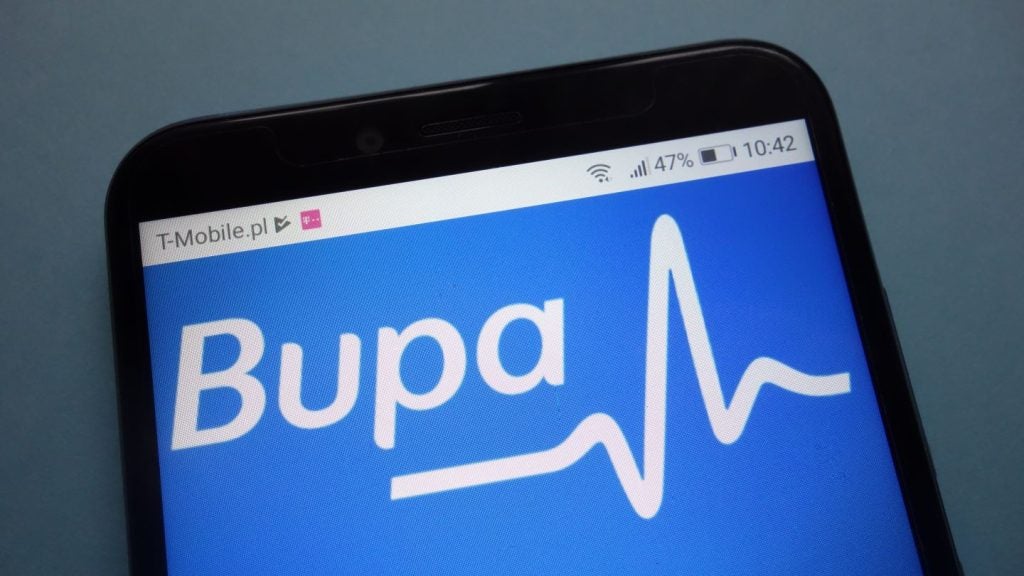Spearheaded by a determined President Obama, sweeping reform of
the US health insurance market is virtually inevitable. Backing
Obama are powerful lobbying groups such as Health Care for America
Now, which are demanding change in what they perceive as an
anti-competitive health insurance industry.
Facing the looming possibility of a major upheaval of the status
quo, the US health insurance industry continues to come under
increasing pressure as it stands charged by its critics of multiple
abuses.
The first salvo in the attack came in March this year when Senator
John D Rockefeller, chairman of the US Committee on Commerce,
delivered a scathing condemnation of the industry’s reimbursement
practices.
“The health insurance industry has been promising to pay a certain
share of consumers’ medical bills, but then they have been rigging
health charge data to avoid paying their fair share,” Rockefeller
commented (see LII 234).
In parallel with Rockefeller’s condemnation of health insurers
President Barack Obama and Congress began an aggressive campaign
aimed at implementing radical reform of the US’ health insurance
structure. Central to reform is a proposed public health plan which
consultancy The Lewin Group estimates could result in the private
health insurance industry loosing up to two-thirds of its
customers.

US Tariffs are shifting - will you react or anticipate?
Don’t let policy changes catch you off guard. Stay proactive with real-time data and expert analysis.
By GlobalDataReinforcing the assault on health insurers is a far-reaching study
into industry practices and pricing undertaken by Health Care for
America Now (HCAN), a coalition representing more than 1,000
organizations in 46 states.
Indicative of the support HCAN has mustered, membership at the
national level includes:
• Alliance for Retired Americans,
• American Academy of Family Physicians;
• American Academy of Nursing;
• American Academy of Pediatrics;
• American Medical Student Association;
• American Nurses Association;
• National Alliance of Professional Psychology Providers;
• National Consumers League; and
• National Physicians Alliance.
Industry concentration
In its study HCAN lays great emphasis on the impact health
insurance industry consolidation has had on competitiveness and
insurance pricing.
According to HCAN more than 400 corporate mergers in the past 13
years have involved health insurers, resulting in a small number of
companies dominating local markets. Backing its claim HCAN pointed
to a report by the American Medical Association (AMA) showing that
94 percent of US health insurance markets are now highly
concentrated.
The AMA’s definition is based on the US Justice Department’s
interpretation which designates a market as being highly
concentrated if one company holds more than a 42 percent share of
that market.
High concentration is particularly evident in less densely
populated and rural-orientated states, noted HCAN. For example, In
Hawaii, Rhode Island, Alaska, Vermont, Alabama, Maine, Montana,
Wyoming, Arkansas and Iowa, the two largest health insurers hold
between them a share of at least 80 percent of the statewide
market.
More populous states also have serious market concentration
problems, noted HCAN. For example, Virginia’s largest health
insurer, Well Point, controls a 50 percent share of the market with
a further 11 percent held by Aetna. The result, claims HCAN, has
been an unjustifiable increase in health insurance costs.
“Shrinking competition among health insurance companies is a major
cause of these spiralling costs,” stressed HCAN. “Contrary to
industry assertions, mergers have undermined market efficiency;
premiums have skyrocketed, increasing more than 87 percent, on
average, over the past six years.”
HCAN has powerful support for its assertions, including that of
President Obama.
“The consequences of lax [antitrust] enforcement for consumers are
clear,” then-Senator Barack Obama said in a September 2007 address
to the American Antitrust Institute. “The number of insurers has
fallen by just under 20 percent since 2000. These changes were
supposed to make the industry more efficient, but instead premiums
have skyrocketed.”
Insurance coverage falling
Rising health insurance costs have way outpaced increases in
average incomes. For example, according to the Henry J Kaiser
Family Foundation’s (HKFF) 2008 annual survey health insurance
premiums increased by an average of 120 percent in total between
1999 and 2007 compared with a 29 percent total increase in average
annual US wages to $25,434 and a 44 percent cumulative increase in
inflation.
Indicative of the cost of health insurance, the National Coalition
on Healthcare (NCH) estimates that the average annual premium
health insurers charged an employer for a health plan covering a
family of four in 2008 was $12,700 while single coverage averaged
$4,700 . On average workers contributed nearly $3,400 towards the
cost of cover in 2008, or 12 percent more than they did in
2007.
Consumers with no access to employer-sponsored health insurance
face an even heavier cost burden. According to HCAN, for a typical
family that moves from group to individual coverage with identical
benefits, annual premiums rise by more than $2,000.
HCAN’s estimate may be conservative. Notably, the Wall Street
Journal recently quoted Dennis Ceru, professor of entrepreneurship
at the Babson College Graduate School of Business, as stating that
the cost for a family on a private health insurance plan can exceed
$20,000 a year.
“The biggest losers in the individual market are those who are less
healthy or coping with a chronic illness,” noted HCAN. “Two-thirds
of respondents in a recent survey said they found it difficult or
impossible to find affordable coverage in the individual
market.”
A serious consequence of rising health insurance costs is a steady
increase in the number of Americans without cover.
According to the HKFF the number of uninsured American adults
between the ages of 17 and 65 with no cover increased from 30.2
million in 2000 to 36.1 million in 2007, or 19.7 percent of people
in that age group.
The HKFF estimates that the number of uninsured adults increased by
at least 2 million in 2008, with the number of uninsured increasing
by 1.1 million for every 1 percent increase in the unemployment
rate.
Declining participation by employers in the provision of health
insurance to their employers has played a key role in the increase
in the ranks of the uninsured. According to the HKFF the rate of
employer coverage fell markedly from 67.8 percent of all adults
covered in 2000 to 63 percent in 2007.
High medical costs, decreasing health insurance coverage and rising
out-of-pocket expenses even for those with coverage has also become
a source of considerable misery to American consumers.
This was highlighted in a recent study by Harvard University
researchers who found that average medical debt for people who
filed for bankruptcy was $12,000, even though 68 percent of these
people had health insurance.
In addition, the study found that half of all bankruptcy filings
were partly the result of medical expenses and that every 30
seconds in the US someone files for bankruptcy in the aftermath of
a serious health problem.
Insurers earn a bad name
Amid the serious health expense-related problems faced by American
consumers and employers, health insurers have not showered
themselves in glory.
In its study, HCAN highlighted a number of recent high profile
legal actions brought against major health insurers. Among these
was a suit filed against UnitedHealth, the second-largest US health
insurer by enrolment, by a trade group of doctors in New York in
which they alleged that UnitedHealth had used illegal coercion to
limit competition.
In a separate issue UnitedHealth agreed to pay $350 million toward
reimbursing patients and physicians underpaid over 10 years as a
result of flaws in the process of out-of-network reimbursement
(ONR). ONR refers to payments relating to consumers who choose to
receive care from health care providers outside of an insurer’s
provider network.
Commenting on the settlement the attorney general of New York,
Andrew Cuomo, said: “For the past 10 years American patients have
suffered from unfair reimbursement rates for critical medical
services due to a conflict ridden system that has been owned,
operated and manipulated by the health insurance industry.”
In its study HCAN also took a hefty swipe at what it termed
“oversized profits and executive pay.” Based on filings with the
Securities and Exchange Commission HCAN noted that net profit of
the 10 largest publicly traded health insurers increased by 428
percent between 2000 and 2007 to a total of $12.9 billion.
HCAN also noted that the 10 insurers, which cover 116 million
Americans, spent $52.4 billion on share buy-backs between 2000 and
2007.
“The companies prefer to hand over the money to Wall Street
investors and executives whose soaring compensation packages depend
on reaching earnings-per-share goals that often would not be
achieved without buybacks,” stated HCAN.
Striking a hard blow in an era when executive pay is under scrutiny
HCAN highlighted that in 2007 alone the CEOs of the top-10 insurers
earned a combined total compensation of $118.6 million — an average
of $11.9 million each, or 468 times more than the average American
worker made that year.
Support for reform growing
The HCAN study has spurred on calls for reform by, from among
others, Senator Charles Schumer who termed the study “the starkest
evidence yet that the private health care insurance market is in
bad need of some healthy competition.” Schumer serves on numerous
Senate committees including the Finance Healthcare
Subcommittee.
“We believe that it is fully possible to create a public health
insurance plan that delivers all the benefits of increased
competition without relying on unfair, built-in advantages,”
stressed Schumer. “If a level playing field exists, then private
insurers will have to compete based on quality of care and pricing,
instead of just competing for the healthiest consumers.”
A former Federal Trade Commission policy director David Balto also
has strong views. “The HCAN report provides a much needed spotlight
on health insurance markets and what it found is a toxic
marketplace where competition and consumers suffer.”
He continued: “Unfortunately, antitrust enforcers have been asleep
at the switch for the past several years and have permitted health
insurers to acquire monopolies in dozens of markets. Consumers have
paid a steep price in higher prices, deceptive and fraudulent
practices, and ultimately assembly line health care.”
Balto, now a senior fellow at the Center for American Progress, has
backed his view with a letter co-signed by HCAN to the Department
of Justice Antitrust Division asking for a comprehensive
investigation into the health insurance industry.
However, Balto believes change will not be easily achieved. He
noted while renewed antitrust and consumer protection enforcement
is essential, it is insufficient to restore what he termed some
semblance of a functioning market.
“Insurance companies will fight tooth and nail against any
antitrust or consumer protection enforcement, and they have the
monopoly profits to fund a One Hundred Years War of litigation,”
said Balto.
Only a public health insurance option will be able to force private
insurance companies to adopt new pro-consumer policies, he
stressed.
Unsurprisingly, the health insurance industry is not sitting back
in the face of criticism.
On the marketing front, for example, media intelligence firm Mintel
Comperemedia reports that health insurers increase marketing direct
mail offers to individuals by 18 percent in the past 12
months.
More strategically, the industry has pledged to put the brake on
rising costs with a view to achieving savings totalling $2 trillion
over 10 years. In 2007, health care spending in the US reached $2.4
trillion, according to the NCH and was projected to reach $4.3
trillion by 2016.
President Obama has called on the industry to present concrete
steps they intend taking to achieve its savings goal. But even if
it can, radical reform of the industry now seems to be virtually
inevitable.








